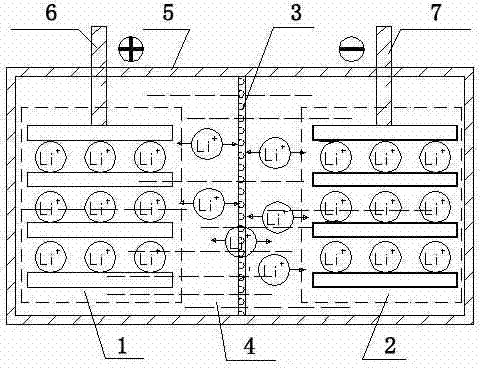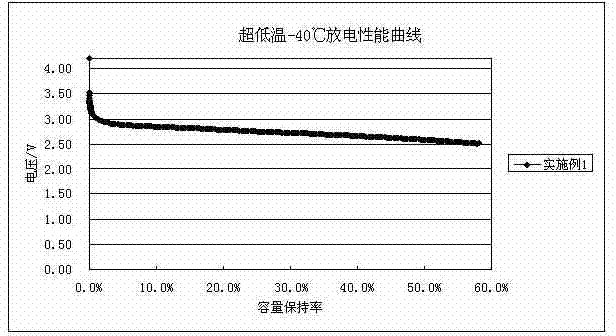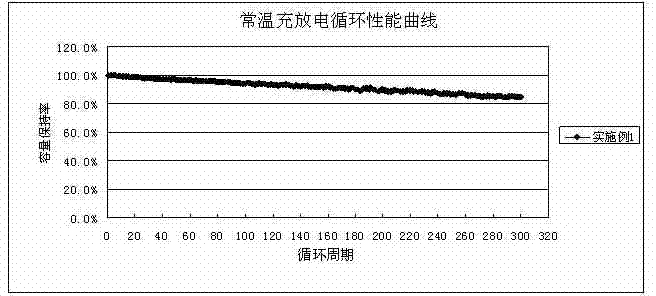Lithium ion battery and lithium ion battery electrolyte for ultralow temperature discharge
A lithium-ion battery and electrolyte technology, applied in the direction of secondary batteries, circuits, electrical components, etc., can solve the problem of not fully disclosing the components and proportions of lithium-ion batteries, hindering the better development of lithium-ion batteries, and reducing the cost of lithium-ion batteries. Use surface and other issues to achieve the effect of facilitating rapid migration, improving low-temperature discharge performance, and ensuring low-temperature performance
- Summary
- Abstract
- Description
- Claims
- Application Information
AI Technical Summary
Problems solved by technology
Method used
Image
Examples
Embodiment 1
[0037] The positive electrode active material lithium cobalt oxide (LiCoO 2 ), the binder polyvinylidene fluoride (PVDF) and the conductive carbon are combined, and these compounds are respectively dispersed in N-methyl-2-pyrrolidone as a solvent at a weight ratio of 92:3:5 to form a positive electrode active material The above slurry was coated on a 16 μm thick aluminum foil, dried and rolled to form a positive electrode. The negative electrode active material made of artificial graphite is suspended and dispersed in carboxymethyl cellulose aqueous solution, and styrene-butadiene rubber (SBR) is added as a binder to form a negative electrode active material slurry. The material was coated on a 12 μm thick copper foil, dried and rolled to form the negative electrode. The positive and negative electrodes are wound or laminated together with a polyethylene separator with a thickness of 25 μm to form a battery core, and then the resulting battery core is placed in a metal contai...
Embodiment 2
[0040] Example 1 was repeated except that 2 wt% triethoxyboron as an anion chelating agent and 8 wt% nitroethane as a low melting point additive were added to the mixture of quaternary solvent and lithium hexafluorophosphate.
Embodiment 3
[0042] Example 1 was repeated except that 1 wt% triethoxyboron as an anion chelating agent and 9 wt% nitroethane as a low melting point additive were added to the mixture of quaternary solvent and lithium hexafluorophosphate.
PUM
| Property | Measurement | Unit |
|---|---|---|
| thickness | aaaaa | aaaaa |
Abstract
Description
Claims
Application Information
 Login to View More
Login to View More - R&D
- Intellectual Property
- Life Sciences
- Materials
- Tech Scout
- Unparalleled Data Quality
- Higher Quality Content
- 60% Fewer Hallucinations
Browse by: Latest US Patents, China's latest patents, Technical Efficacy Thesaurus, Application Domain, Technology Topic, Popular Technical Reports.
© 2025 PatSnap. All rights reserved.Legal|Privacy policy|Modern Slavery Act Transparency Statement|Sitemap|About US| Contact US: help@patsnap.com



